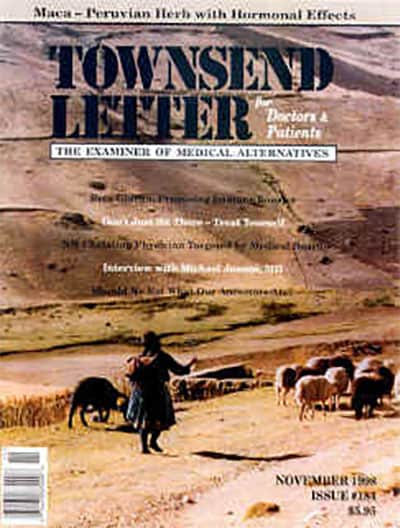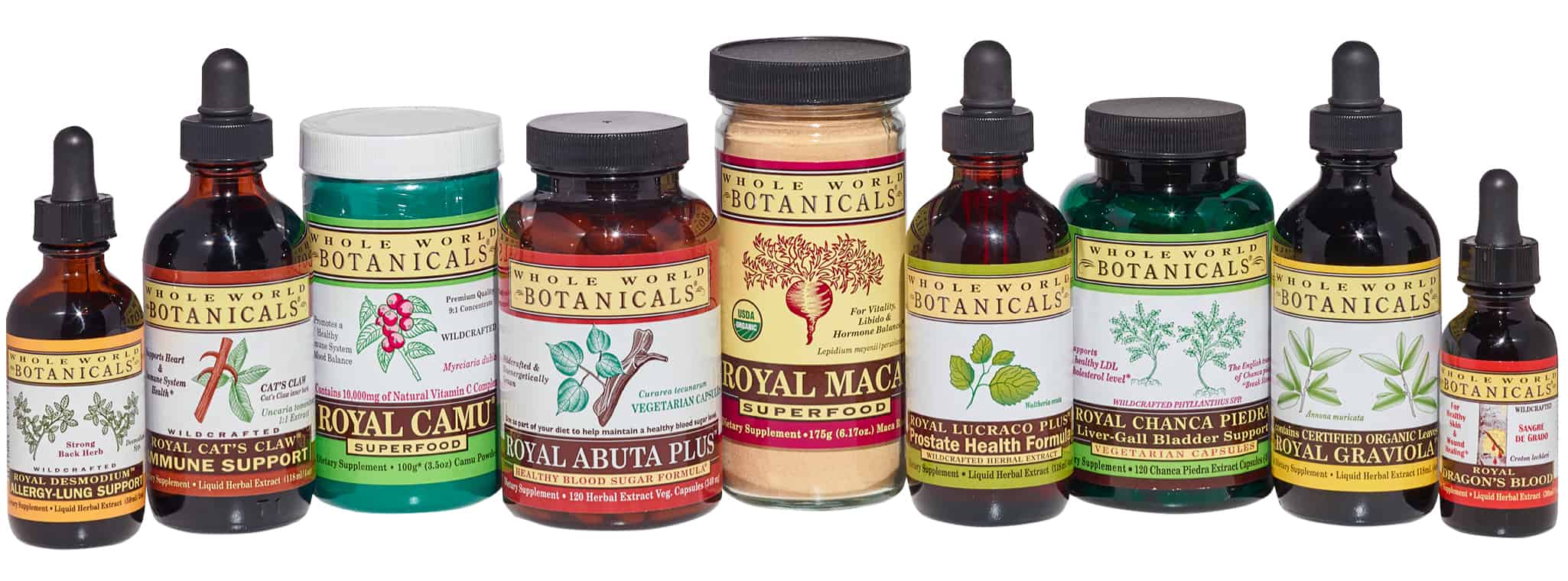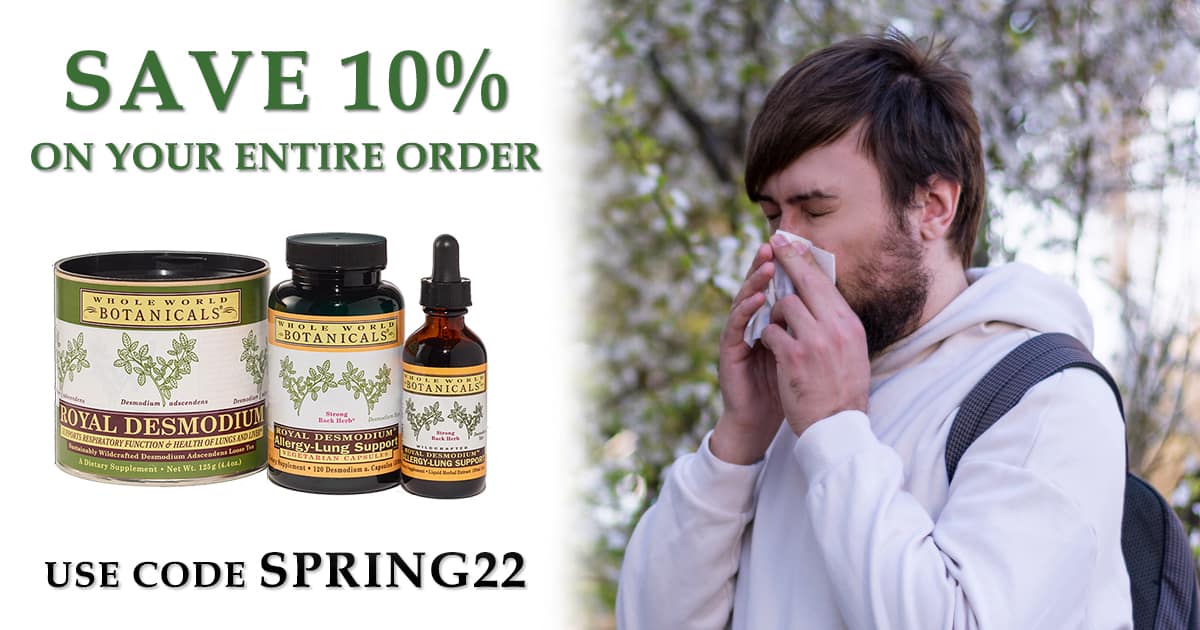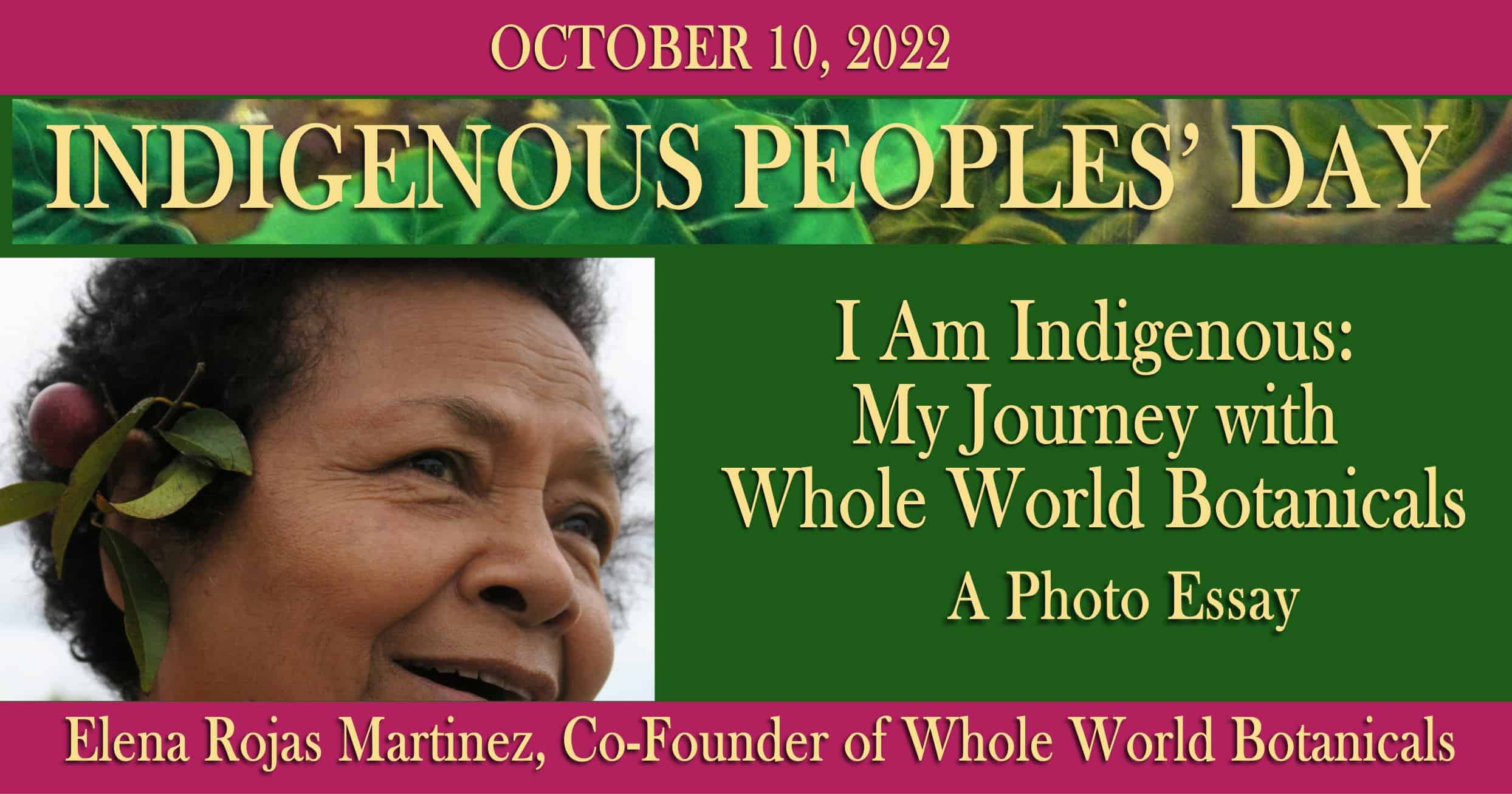EFFECTS OF PERUVIAN MACA ON HORMONAL FUNCTIONS
by Morton Walker, DPM
 Note: since this article was published in November 1998, New World Botanicals has changed its name to Whole World Botanicals.
Note: since this article was published in November 1998, New World Botanicals has changed its name to Whole World Botanicals.
Copyright 1998 by Dr. Morton Walker
Freelance Communications
484 High Ridge Road,
Stamford, Connecticut 06905 USA
Phone 203-322-1551, Fax 203-322-4656
Whether discussions today are about estrogen replacement, the solutions mentioned are generally drugs currently on the market. Lately, however, we’ve been hearing marvellous reports about a hearty plant root cultivated high in the andes of Peru. Known as ‘maca,’ this ancient nutritional source and efficacious endocrine system remedy is being dispensed by health professionals as a safe and natural substitute for drugs.
Maca, in fact, has been used by Peruvian consumers for many centuries, from before the time of the Incas. The Incas found maca so potent that they restricted its use to their Royalty’s court. Upon overrunning the Inca people, conquering Spaniards became aware of this plant’s value and collected tribute in maca roots for export to Spain. Maca was used as an energy enhancer and for therapy, increasing male potency, or improving other hormonal function.
Promoting the introduction of maca into the United States market, Viana Muller, PhD, is cofounder and President of Whole World Botanicals™, a New York City-based company which manufactures and imports the product, Royal Maca® ‘Once in a decade an herb used by native peoples for thousands of years comes to our attention and it seems so important to health that we wonder how we ever got along without it before,” says Dr. Muller. “Maca is that kind of herb. ‘Now women have an alternative to hormone replacement therapy [HRT],’ Dr. Muller continued. ‘Maca works in an entirely different and more satisfactory way for most women than the phytogenic herbs like black cohosh and licorice root. These herbs have become popular with menopausal women who refuse to take the drugs of HRT.
‘And men, too, find in maca an herb that will counteract the difficulties they may experience in maintaining good sexual relationships as they age, due to a general slowing down in the output of the endocrine glands,’ said Dr. Muller.
The Importance of Maca in the History of Peru
Maca’s cultivation goes back perhaps five millennia. It was an integral part of the diet and commerce of the high Andes region. When they controlled that certain South American region, it was used for nutrition by the Spanish Royalty as well. But eventually knowledge of maca’s special qualities died out, being preserved only in a few remote Peruvian communities.
In the 1960s and later in the 1980s, German and North American scientists researching botanicals in Peru, rekindled interest in maca through nutritional analyses of what was designated as ‘the lost crops of the Andes.’ The publication of a book by that name introduced maca to the world.
At an international conference in 1991, the Food and Agricultural Organization (FAO) of the United Nations recommended that Peruvians should return to eating traditional, native Andean foods. Maca was mentioned in the FAO list as a means of combating nutritional problems being caused by people switching to processed foods and high-sugar drinks. The reintroduction of maca has established healthy eating once again in the Peruvian diet.
The New Maca Species, Lepidium peruvianum Chacon
The scientist responsible for most of the current knowledge of the maca plant is Gloria Chacon de Popivici, PhD, a Peruvian biologist trained at the University of San Marcos, in Lima, Peru. Dr. Chacon wrote her dissertation in the early l960’s on the maca root, and did groundbreaking work on the plant by discovering a new species. By analyzing its chemical actives, she pinpointed their hormonal effects, Dr. Chacon also authored a book describing the root’s nourishing micronutrients: La importancia de Lepidium peruvianum Chacon (Maca) en la Alimentacion y Salud del ser Humano y Animal 2,000 Ados Antes y Despues de Cristo y en el Siglo. Published in Lima, in 1997, the book is a definitive study on maca and discusses its use from 8000 BC to the present and into the 21st century.
Having become interested in the almost extinct maca back in 1960 as an undergraduate biology student at the University of Lima, Dr Chacon went on to do extensive research. During a botanical field trip to the Central Highlands of her native Peru, she encountered an amazing and little-known plant whose root, she learned from the local population, had powerful energizing and fertility effects.
A search of botanical literature revealed that a plant closely resembling maca had been identified in 1843 by the German botanist, Walpers. He called it Lepidium meyenii Walpers, but the plant he described was a perennial without the same medicinal effects as Peruvian maca. It grows in parts of Bolivia and Chile. The young student was excited to realize that she had located and identified a new species, which she called Lepidium peruvianum Chacon. It is a classification accepted by major herbariums in the United States and Europe as a true new species. Curiously, in Peru it is still called by the erroneous name, Lepidium meynii Walper.
Effects of Maca on the Endocrine Glands
This biologist/author has done the most important scientific work to date on the maca plant. In particular, Dr. Chacon isolated four alkaloids from the maca root and carried out animal studies with male and female rats given either powdered maca root or alkaloids isolated from the roots. In comparison with the animal control groups, those receiving either root powder or alkaloids showed multiple egg follicle maturation in females and, in males, significantly higher sperm production and motility rates than control groups.
Dr. Chacon established that it was the alkaloids in the maca root, not its plant hormones, that produced fertility effects on the ovaries and testes of the rats. These effects are measurable within 72 hours of dosing the animals,’ she offered in a recent telephone interview from Lima, Peru. Through the experiments, she deduced that the alkaloids were acting on the hypothalamus-pituitary gland, which explains why both male and female rats were afflicted in a gender-appropriate manner. This also explains why the effects in humans are not limited to ovaries and testes, but also act on the adrenals, giving a feeling of greater energy and vitality, and on the pancreas and thyroid as well.
‘Implications of Dr. Chacon’s discovery of the pituitary stimulating effects of maca are enormous,’ Dr. Muller said when I spoke to her recently. ‘What it appears to mean is that hormone replacement therapy, even the natural varieties, will no longer be the gold standard for optimising a holistic point of view.’
Hugo Malaspina, MD, Works with Maca
Now practicing complementary medicine with an emphasis on the use of medicinal herbs, one of the earliest modern pioneers in the therapeutic use of this ancient herb for an urban population is Hugo Malaspina, MD, a respected cardiologist in Lima. Dr. Malaspina has been using the maca root in his practice for a decade and makes the following observations. ‘There are different medicinal plants that work on the ovaries by stimulating them. With maca, though, we should say that it ‘regulates’ the ovarian function.’ Dr. Malaspina, who uses maca therapy for both his male and female patients, recalls that he first heard about this extraordinary herb through a group of elderly gentlemen who, while well along in years were still lively and interested in enjoying sexual activities. ‘One of this group (they were all over 70) started taking main and found he was able to perform satisfactorily in a sexual relationship with a lady friend. Soon everyone in the group began drinking the powered maca as a beverage and enjoying the boost that the root was giving their hormonal functions. I have several of these men as patients, and their improvement prompted me to find out more about maca and begin recommending it to my other patients,’ Dr. Malaspina stated.
What makes maca so effective, according to Dr. Malaspina, is that rather than introducing hormones from outside the body, maca encourages the ovaries and other glands to produce the needed hormones. The cardiologist-turned-wholistic physician said, ‘Maca regulates the organs of internal secretion, such as the pituitary, the adrenal glands, the pancreas, etc. I have had perhaps 200 female patients whose perimenopausal and postmenopausal symptoms are alleviated by taking maca.”
Maca Provides Benefit Following Hysterectomy
Dr. Malaspina has even found maca to be effective for women with hysterectomies. He discussed a 49-year old woman who had a hysterectomy eight years ago, although she still retained her ovaries. ‘The woman was beginning to get menopausal symptoms – hot flashes, cold feet, depression, tachycardia, some constipation and some bone loss. Because she had breast implants, usual hormone replacement therapy was not an option for her,’ explained Dr. Malaspina. ‘I started her on maca and within three months the depression, constipation, and hot flashes cleared up. Based on my experience with some other patients, I expect that her bone density will improve as will, but that will take longer.’
He has also dispensed maca to women who have undergone complete hysterectomies. One patient who had her ovaries removed was on HRT. ‘But she didn’t feel well taking the HRT so she stopped.
When I examined her the blood serum estradiol level was 15 which is very low and she was experiencing hot flashes. Two months after she began taking maca I retested her and the woman had a level of 75. Anything above 60 is probably an adequate postmenopausal level. Maca enabled the adrenals to make sufficient hormones to avoid symptoms,’ he said.
Dr. Malaspina adamantly prefers maca therapy to HRT. ‘Me presence of the outside hormone circulating in the system sends a message to the pituitary and the hypothalmus that there is a sufficient quantity of hormones in the body, and so they stop producing them. When menopause arrives, then, the ovaries are atrophied and do not produce the estrogen and progesterone which the body requires minimally to function. For this reason, I encourage women to start with maca before menopause. It seems to help the endocrine system to stay in balance.’
Jorge A Calderon, MD, Prescribes Maca
Another Peruvian pioneer in the therapeutic application of maca integrated into a modem medical practice is Jorge Aguila Calderon, MD. An intemist, Dr. Aguila Calderon is former Chief of the Department of Biological Sciences and Dean of the Faculty of Human Medicine at the National University of Federico Villarreal in Lima. Like Dr. Malaspina, he prescribes maca for a wide variety of conditions, including osteoporosis and the healing of bone fractures in the very elderly. ‘Maca has a lot of easily absorbable calcium in it, plus magnesium, and a fair amount of allies which we are finding very useful in treating the decalcification of bones in children and adults.’
Along with prescribing an excellent diet and certain lifestyle changes, Dr. Aguila Calderon has helped patients with male impotence, male sterility, and female sterility by employing maca therapy. Additional problems he treats with maca are rickets, various forms of anemia, menopausal symptoms such as hot flashes and night sweats, climacteric and erectile difficulties in men, premature aging, and general states of weakness such as chronic fatigue.
American Physician Gabriel Cousens, MD, Uses Maca
Physicians in the United States believe this herb has the potential of a balanced answer to the effects of aging on the endocrine system. Many who have tried phytoestrogens and/or precursor hormones such as DHEA or pregnenolone, or even natural hormone replacement therapy and have been dissatisfied, are getting excellent results from their use of maca root.
Gabriel Cousens, MD, practicing internal medicine in Patagonia, Arizona, says, Whenever possible, I prefer to use maca therapy rather than hormone replacement therapy because HRT actually ages the body diminishing the hormone producing capability of the glands. Maca has proven to be very effective with menopausal patients in eliminating hot flashes and depression and in increasing energy levels. They find the right dosage level, sometimes I have started the patient on maca treatment with a half a teaspoon of powder or three capsules a day. In some cases I have raised the dosage to a teaspoon or six capsules a day for full effectiveness.’
Henry Campanile, M.D., Offers Adrenal Balancing
Maca root, in keeping with its mode of acting through the hypothalamus and pituitary, has a balancing Bud nourishing effect on the adrenal glands. Henry Campanile, MD, a 50-year old specialist in internal and family/complementary medicine practicing in St. Petersburg, Florida, relates: ‘I happen to have been born with one adrenal gland just like my father. I started taking cortisone in my late twenties to relieve the fatigue which I was already feeling. Knowing the dangers of long term cortisone use, I looked around for an alternative, and this circumstance is what got me interested in complementary medicine. I started using pregnenelone about 10 years ago and it has been fairly satisfactory. But one of my patients told me about Royal Maca®, and I started taking it about a month ago. It is phenomenal! I haven’t felt this good since I was 20 years old. I have so much energy and look so well, my patients have remarked on it and told me how rested I seem. I’ve got so much energy now have started an exercise program.’
After trying it out on himself, Dr. Campanile began using maca with his patients. ‘My first patient to take the maca capsules was experiencing hot flashes and other menopausal symptoms. She started feeling much better after using this herb for only four days. I’m also employing it with patients who have low adrenal function.’
Harold Clark, MD., Makes Maca a Key Remedy
Another American doctor who has recently began to use maca therapeutically for some patients is of New Rochelle, New York. Dr. Clark, who utilizes chelation therapy and ozone therapy in addition to herbs, vitamins and minerals in his practice stated, ‘I’m amazed at how fast maca worked on two patients that I have been concerned about for some time.’ He described one patient as 55 year-old Mary T, a postmenopausal, woman. Mary T was possessed of numerous health problems, including somewhat elevated blood sugar, hypertension, atrial fibrillation, and hypomagnesemia. She had been acutely ill for two months with osteomyelitis and generalized sepsis. Unable to work, she was suffering from great fatigue and depression and feeling ‘worse and worse’ over the last five years.
‘Within just four days of taking the maca capsules, Mary T went through an enormous turnaround,’ said Dr. Clark. ‘She has gone out to shop in the stores; she’s cleaning her house; she feels strong and vigorous; and her depression is gone.’
Early Menopause and Vaginal Dryness Avoided
One young West Coast woman, Susan F, has an interesting experience to tell. After giving birth to two children, the 31-year old mother decided to use contraceptive pills for the first time. Since a possible side effect of the method she chose was not having a period, Susan F didn’t think anything of its non-occurrence until six months later when she also began experiencing mood swings, hot flashes, and dry skin.
Her visit to an endocrinologist revealed that the woman’s hormones were at ‘menopause’ levels. Then Susan’s mother told her that early menopause runs in the family. Her grandmother, her mother, and her older sister all had early menopause. It had been a year since her last period, and by chance her husband brought home some Royal Maca® for himself. He told his wife to try it, too, which she did.
Last June Susan F experienced resumption of menstruation once again. Her periods have been regular ever since taking the maca. Susan F also comments that her skin is now soft and moist, the way it used to be.
Diane S, a 52-year-old librarian from Rye, New York, would never consider taking estrogen because of the health risks she feared. Instead she opted for dehydroepiandrosterone (DHEA) as an anti-aging hormone. This very physically active woman noticed an upsurge in her energy from ingesting DHFA but intercourse was still painful for her due to the drying of her vagina. The gynecologist she consulted about the problem told her it was a ‘natural part of aging that could only get worse with time.’ He told Diane S that the only thing able to help would be taking estrogen.
But after three weeks of taking Royal Maca® Diane reported that her vaginal lubrication was good, and vaginal dryness was no longer troublesome.
Results for a Nurse-Practitioner and Her Patients
From her White Plains, New York, clinic, nurse-practitioner Stephanie Sulger-Smith, RN, MS, says that she read an article about postmenopausal health which discussed Royal Maca®. At her clinic she offers nutritional counselling for a variety of conditions.
‘I had been prescribing black cohosh, dong quai, oil of evening primrose, vitamin E and other natural remedies to women with perimenopausal symptoms. But when I began using these remedies to help with my own hot flashes and other symptoms of approaching menopause, I didn’t get the relief I needed. So I acquired a supply of maca powder and took it as advised.
Almost immediately, my hot flashes disappeared and my energy level went up. My response to maca was surprising to my gynecologist, who insisted that I undergo a series of laboratory studies, including estrogen levels, uterine monograms and others. They all turned out normal,” says nurse Sulger-Smith. ‘I haven’t had a hot flash since the beginning of November 1997, and I feel fabulous. ‘When I told my patients about Royal Maca®, they tried it and found freedom from their perimenopausal and menopausal symptoms. One patient who has been taking maca for over a year had a series of bone density studies done that showed increased density in the spine,” says Nurse Sulger-Smith. ‘Other case histories exhibit similar positive results from taking maca. In fact, most of the women taking the root powder report that they feel less fatigue, greater energy, are less susceptible to stress, and do not experience hot flashes or night sweats.
Not Every Menopausal Woman Responds to the Root
Dr. Muller advises that although the great majority of menopausal and postmenopausal women could benefit from maca therapy, it is not necessarily the answer for every woman. ‘First of all,’ she says, ‘you have those women whose bodies are so well balanced through a combination of good nutrition, fitness, good genes and lifestyle that they are doing just great without adding any Royal Maca®;. Our company does not want to treat menopause as an illness and tell all women that they need maca therapy. Each woman is a different biochemical entity and will react in a different way to this natural life event.
‘Then there is a whole group of women who have been on hormone replacement therapy for five, ten or 20 years. To a greater or lesser extent their ovaries have atrophied from receiving estrogen and other hormones supplied to them from outside for a long period of time. One physician I spoke to treated a patient who was taking HRT for eight years,’ Dr. Muller said. ‘He had her taper off over a two-week period while ingesting 2 capsules of Royal Maca®; per day. She’s been completely off HRT for about a month now, while continuing with the maca, and so far she hasn’t experienced any recurrence of symptoms. But at this point, there is no consensus about the best approach.
‘And of course, there are always a few individuals who will show an allergic reaction or who fall into a group of women or men for whom a pituitary stimulator such as maca is contraindicated in the absence of studies that prove its safety. These groups include men with a high PSA level or a history of prostate cancer. Men using maca on a regular basis should undergo periodic PSA tests. Women with a history of breast cancer or other types of hormone-related cancer also fall into this group.’
Dr. Viana Muller and Whole World Botanicals
The history and value of maca agriculture in traditional Peruvian Society is becoming known through the efforts of both historians and anthropologists who have studied Peruvian culture. Among the most knowledgeable of these anthropologists is Viana Muller, PhD, President of Whole World Botanical™. Dr. Muller provided this medical journalist with a description of maca’s history and its extraordinary medicinal attributes. In fact, she has translated much of the documentation derived from articles and text originally in Spanish relating to the science, history and anthropology of maca.
Dr. Muller explained that her work with maca and the communities that produce it enable her to achieve certain goals. She wishes to provide highly beneficial natural health products to consumers while helping the producing communities.
‘The trail that led me to studying the maca root began in 1989 during an anthropological field research trip to the jungles of Peru,’ the anthropologist explains. ‘Then I came across Cat’s Claw which at that time was almost totally unknown in the USA. From there I became involved in looking for other highly effective Peruvian medicinal herbs. In 1994, 1 came upon maca and spent the next two years researching its botany, history of use, and how it’s used today by native peoples and medical doctors practicing in Peru.
‘By founding Whole World Botanicals in 1991, I discovered a way to join forces with native people to provide a market for their medicinal herbs and to make them partners in our company’s venture by returning to them a percentage of gross sales,” states Dr. Muller. ‘The farmers who produce maca are llama and cattle herders living under very harsh conditions in communities high in the Andes that have existed for centuries. In order to survive they need to partially integrate economically and culturally into Peruvian society, but they still live on communal land that is distributed to households by the communal council. Decisions about what to grow and how to use the land are made by the council. In some areas they still speak Quechua, their ancestral language, and maintain many traditions such as the worship of Pachamama, Mother Earth.” Urban populations consume maca in novel ways. It is sold by street vendors as ‘maca juice’ and even made into marmalade. The return to consumption of traditional foods is helping to counteract the overall reduction of good health that occurs when Peruvian farmers produce and consume less of their ancestral crops.
Maca as an Anti-Aging Herb for Both Men and Women
Garry P. Gordon, MD, former president of the American College for Advancement in Medicine, now Founder and President of the International College of advanced Longevity Medicine, located in Chicago, Illinois, bases his appreciation of maca on his own experience with it. Speaking with me from Payson, Arizona, Dr. Gordon said, ‘We all hear rumors about various products like maca. But using this Peruvian root myself, I personally experienced a significant improvement in erectile tissue response. I call it ‘nature’s answer to Viagra™’.
What I see in maca is a means of normalizing our steroid hormones like testosterone, progesterone, and estrogen. Therefore it has facility to forestall the hormonal changes of aging,’ Dr. Gordon believes. ‘It acts on men to restore them to a healthy functional status in which they experience a more active libido. Lots of men and women who previously believed their sexual problems were psychological are now clearly going to look for something physiological to improve quality of life in the area of sexuality,’ says Dr. Gordon. ‘Of course, as someone interested in longevity, I’m aware that mortality comes on much sooner for those individuals whose sexual activity is diminished or nonexistent. In other words, I believe that people who engage in sex twice a week or more live longer. I’ve found sexual activity to be a reliable marker for overall aging.”
Burton Goldberg, President of Alternative Medicine Publishing in Anburon, California, whose latest book is An Alternative Medicine Definitive Guide to Cancer is another enthusiast of maca. He says that when he tried maca he was very pleased with the results and began taking it regularly. I’m a 72 year old man and this maca has taken 25 years off my aging sex life,’ declares Burton Goldberg. That’s pretty important to me!’
Dr. Garry Gordon is concerned about reproductive problems in today’s world. ‘Society faces a huge problem of dropping sperm counts and sex hormone difficulties. But maca promises a nontoxic solution with no downside effects. It’s a therapy that appears to offer men and women the chance for hormonal rejuvenation,’ concludes Dr. Gordon. ‘We currently live in an era in which almost everyone will be doing something to deal with the hormonal consequences of aging. Royal Maca® is now readily available.”
Resources
For more information on Royal Maca®, manufactured and distributed by Whole World Botanicals of New York, New York, please contact the company’s president, Dr. Viana Muller, through her freecall telephone 877-885-5517 or call 212-781-6026; teleFAX 212-781-0440.





















